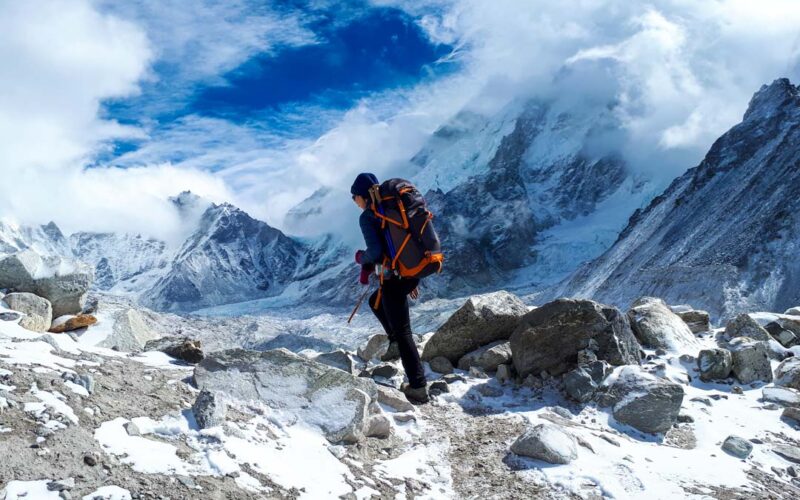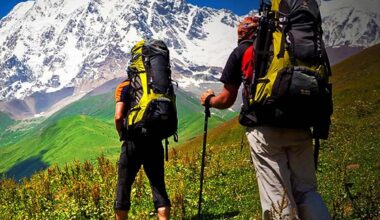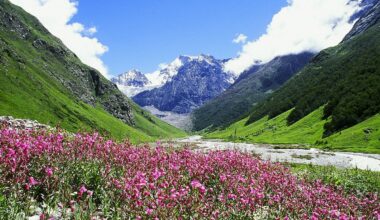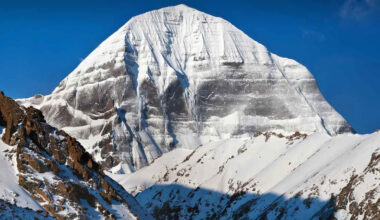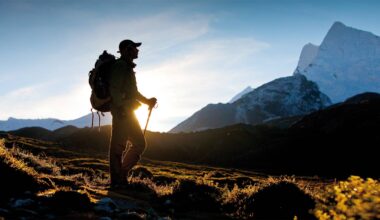Everest Base Camp (EBC) trekking is one of the most iconic adventure experiences for trekking enthusiasts and beginners alike. Nestled in the heart of the Himalayas, this trek offers breathtaking views of the world’s highest peak, unique cultural experiences, and the thrill of high-altitude trekking. If you’re planning your first Everest adventure, understanding the Everest Base Camp trek cost and essential tips is crucial for a safe and memorable journey.
Whether you are an international tourist or an adventure-loving Indian traveler, this comprehensive guide covers everything from trek packages, route options, difficulty levels, and beginner-friendly advice to help you plan your ultimate Everest adventure.
Introduction to Everest Base Camp Trek
Everest Base Camp trek is a bucket-list adventure that attracts thousands of trekkers each year. Known for its stunning landscapes, charming Sherpa villages, and breathtaking Himalayan panoramas, the trek is accessible even for beginners with proper preparation. Unlike climbing Mount Everest, trekking to the base camp does not require mountaineering experience, making it an ideal choice for first-time high-altitude trekkers.
Some key highlights of the trek include:
- Close-up views of Mount Everest and surrounding peaks
- Visits to Sherpa villages such as Namche Bazaar, Tengboche, and Dingboche
- Scenic glaciers, rivers, and rhododendron forests
- Cultural experiences with monasteries and local traditions
Explore more trekking adventures
Everest Base Camp Trek Cost Overview
Understanding the Everest Base Camp trek cost is essential before planning your journey. The total cost can vary depending on several factors:
- Trek route and duration – Standard EBC treks usually take 12–16 days
- Guided vs independent trek – Hiring a guide adds cost but ensures safety
- Accommodation and food – Tea houses, lodges, and meals along the route
- Season – Peak season (spring and autumn) can be slightly more expensive
- Permits and fees – Necessary trekking permits for the Sagarmatha National Park and TIMS
Cost Breakdown Table
| Expense Component | Estimated Cost (USD) | Notes |
|---|---|---|
| TIMS Permit | 20–30 | Required for all trekkers |
| Sagarmatha National Park | 30–50 | Entrance fee |
| Guide & Porter | 25–40 per day | Optional, highly recommended for beginners |
| Accommodation | 10–30 per night | Tea houses and lodges |
| Food | 10–25 per day | Meals at lodges or restaurants |
| Transportation | 100–200 | Flights to/from Lukla or local buses |
| Miscellaneous | 50–100 | Gear, tips, emergencies |
Cost From India
For Indian travelers, the Everest Base Camp trek cost from India typically ranges from ₹90,000 to ₹150,000 for a guided package. This includes flights from India to Kathmandu, domestic flights to Lukla, trekking permits, guide and porter charges, and accommodation.
- From Delhi: Cost may slightly increase due to airfare and travel arrangements
- Budget options are available for those willing to trek independently with minimal support
Cost Per Person
The per-person cost varies depending on the style of trekking:
- Budget trek: $1,000–$1,200 (₹90,000–₹1,10,000)
- Standard trek: $1,200–$1,500 (₹1,10,000–₹1,40,000)
- Luxury trek: $1,500+ (₹1,40,000+) with comfortable lodges and full-service packages
Hiring a guide is highly recommended for beginners to ensure safety and navigation, especially at high altitudes.
Everest Base Camp Trek Packages
Trekking packages simplify planning, especially for first-timers. A typical Everest Base Camp package includes:
- Guide and porter services
- Tea house accommodations
- Meals during trekking days
- Trekking permits (TIMS and Sagarmatha National Park)
- Domestic flights from Kathmandu to Lukla
Types of Packages:
- Budget Package: Basic tea house stay, shared guides, and meals included
- Standard Package: Comfortable accommodation, personal guide, and meals
- Premium Package: Luxury lodges, private guide and porter, all-inclusive services
Tips for choosing a package:
- Match the package to your fitness level and budget
- Check if the package includes gear rental, insurance, and emergency support
- Look for experienced guides with positive reviews
Best Time to Trek Everest Base Camp
Timing plays a significant role in planning your Everest Base Camp adventure. Trekking seasons influence costs, weather, and overall experience.
- Spring (March–May): Ideal for clear skies, moderate temperatures, and blooming rhododendrons
- Autumn (September–November): Clear views, stable weather, and popular among international trekkers
- Winter (December–February): Fewer crowds and lower cost, but very cold temperatures and snow may limit accessibility
- Monsoon (June–August): Not recommended due to heavy rains, landslides, and slippery trails
Special Focus: Everest Base Camp trek in December offers a unique, serene experience with snow-covered landscapes and fewer trekkers.
Everest Base Camp Trek Route and Distance
The trek typically starts from Lukla, accessible via a domestic flight from Kathmandu. The popular EBC route covers:
- Lukla to Phakding: Easy acclimatization trek
- Phakding to Namche Bazaar: Gradual ascent, local markets, and monasteries
- Namche Bazaar to Tengboche: Scenic views of Everest, Ama Dablam, and rhododendron forests
- Tengboche to Dingboche: Steeper climb, high-altitude acclimatization
- Dingboche to Lobuche: Glacier views and gradual ascent
- Lobuche to Gorak Shep: Final trekking push
- Gorak Shep to Everest Base Camp: Reaching the iconic destination
- Return Journey: Retrace steps back to Lukla
Comparison: EBC vs ABC (Annapurna Base Camp)
- EBC is higher altitude (5,364m at base camp) and more challenging than ABC (4,130m)
- EBC offers iconic Everest views and Sherpa cultural experiences
- ABC is considered easier and shorter, ideal for beginners looking for moderate trekking
Everest Base Camp Trek Difficulty Level
Many beginners wonder: Can a beginner climb Everest Base Camp? The good news is yes! The trek is achievable with proper preparation.
Difficulty Factors:
- High altitude and risk of altitude sickness
- Steep trails in sections, long trekking days
- Cold temperatures, especially in winter
Tips for Beginners:
- Start physical training: cardio, stair climbing, and endurance
- Acclimatize properly at Namche Bazaar and Dingboche
- Stay hydrated and avoid alcohol
- Carry layered clothing and trekking gear
- Listen to your body and rest when needed
Everest Base Camp Trek Guide
Hiring a guide is highly recommended, especially for first-timers.
Benefits of a Guide:
- Knowledgeable about routes and acclimatization
- Safety and emergency assistance
- Local cultural insights and communication help
- Porter management and logistical support
Guides can be hired individually or as part of a trekking package. Local certified guides provide authentic experiences and ensure your trek runs smoothly.
Frequently Asked Questions (FAQ)
Q1: What is the fee for climbing Everest for Indians?
- Trekking to Everest Base Camp requires permits: TIMS ($20–30) and Sagarmatha National Park ($30–50). Climbing Everest peak itself involves much higher costs (₹70–₹90 lakh for Indian climbers).
Q2: Can a beginner climb Everest Base Camp?
- Yes, beginners can trek to EBC with proper fitness, acclimatization, and a guide.
Q3: Which is better, EBC or ABC?
- EBC offers iconic Everest views and higher altitude; ABC is shorter and easier, suitable for beginners with moderate trekking experience.
Q4: What is the difficulty level of the Everest Base Camp Trek?
- Moderate to high due to altitude; requires endurance and acclimatization.
Q5: Cheapest Everest Base Camp trek options
- Budget packages starting from $1,000–$1,200 per person; independent trekking reduces cost further.
Q6: Everest Base Camp trek height and distance
- EBC is 5,364m above sea level; total trekking distance around 130 km round trip.
Q7: Everest Base Camp trek 2026 planning
- Book flights and packages early for peak seasons; check permits and local guidelines.
Essential Tips for a Successful Everest Base Camp Trek
- Physical Fitness: Train months in advance for endurance and strength
- Gear Essentials: Layered clothing, hiking boots, trekking poles, gloves, and sunglasses
- Hydration & Nutrition: Carry water purification tablets and high-energy snacks
- Altitude Acclimatization: Spend 1–2 days at Namche Bazaar and Dingboche
- Travel Insurance: Ensure coverage for high-altitude trekking and emergency evacuation
- Respect Local Culture: Visit monasteries, interact with Sherpas, and follow eco-friendly practices
Conclusion
The Everest Base Camp trek is a life-changing adventure for beginners, adventure travelers, and trekking enthusiasts alike. With proper planning, understanding the Everest Base Camp trek cost, and following expert tips, you can make your Himalayan journey safe, enjoyable, and unforgettable.
Remember, the trek is not just about reaching the base camp—it’s about experiencing the majestic landscapes, Sherpa culture, and the thrill of high-altitude trekking. Start planning your Everest Base Camp adventure today and make memories that will last a lifetime.
